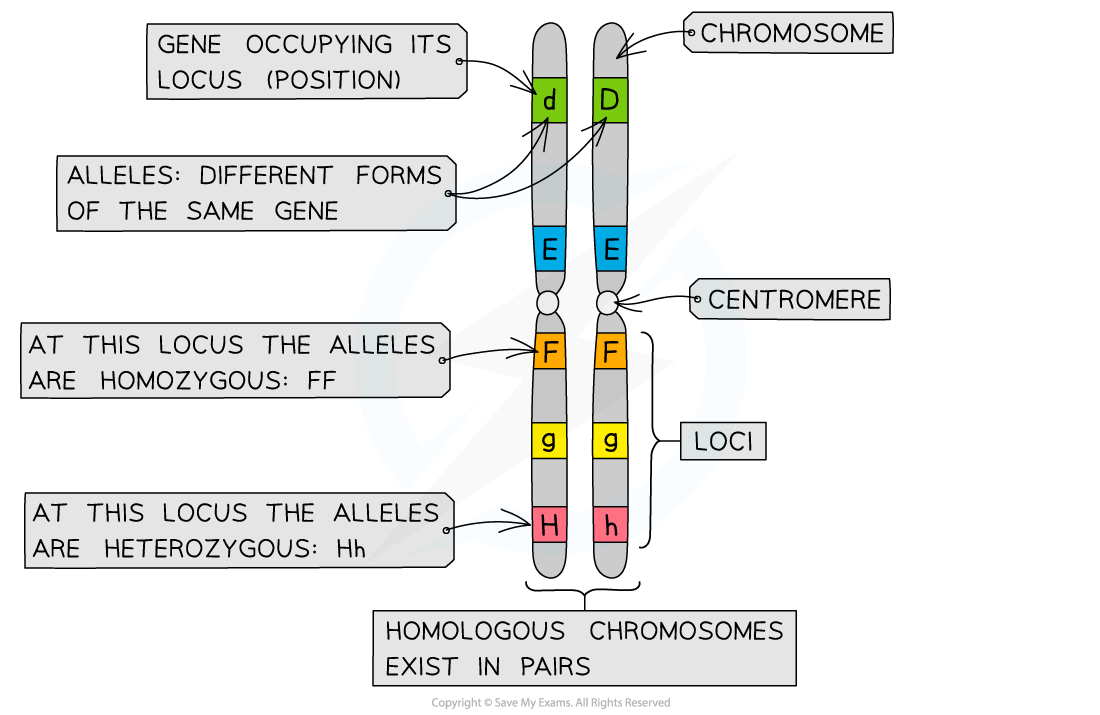Locations of Genes on a Chromosome
- Every chromosome consists of a long DNA molecule that contains several hundred or even thousands of different genes coding for different proteins
- A length of DNA that codes for a single polypeptide or protein is called a gene
- The position of a gene on a chromosome is known as its locus (plural: loci)
- Through experiments and genetic mapping techniques, scientists have been able to work out the specific physical locations of the genes on different chromosomes
- Each gene occupies a specific locus so that the gene for a particular characteristic is always found at the same position on a particular chromosome
- Each gene can exist in two or more different forms called alleles
- Different alleles of a gene have slightly different nucleotide sequences but they still occupy the same position (locus) on the chromosome

Five different genes found at five different loci

